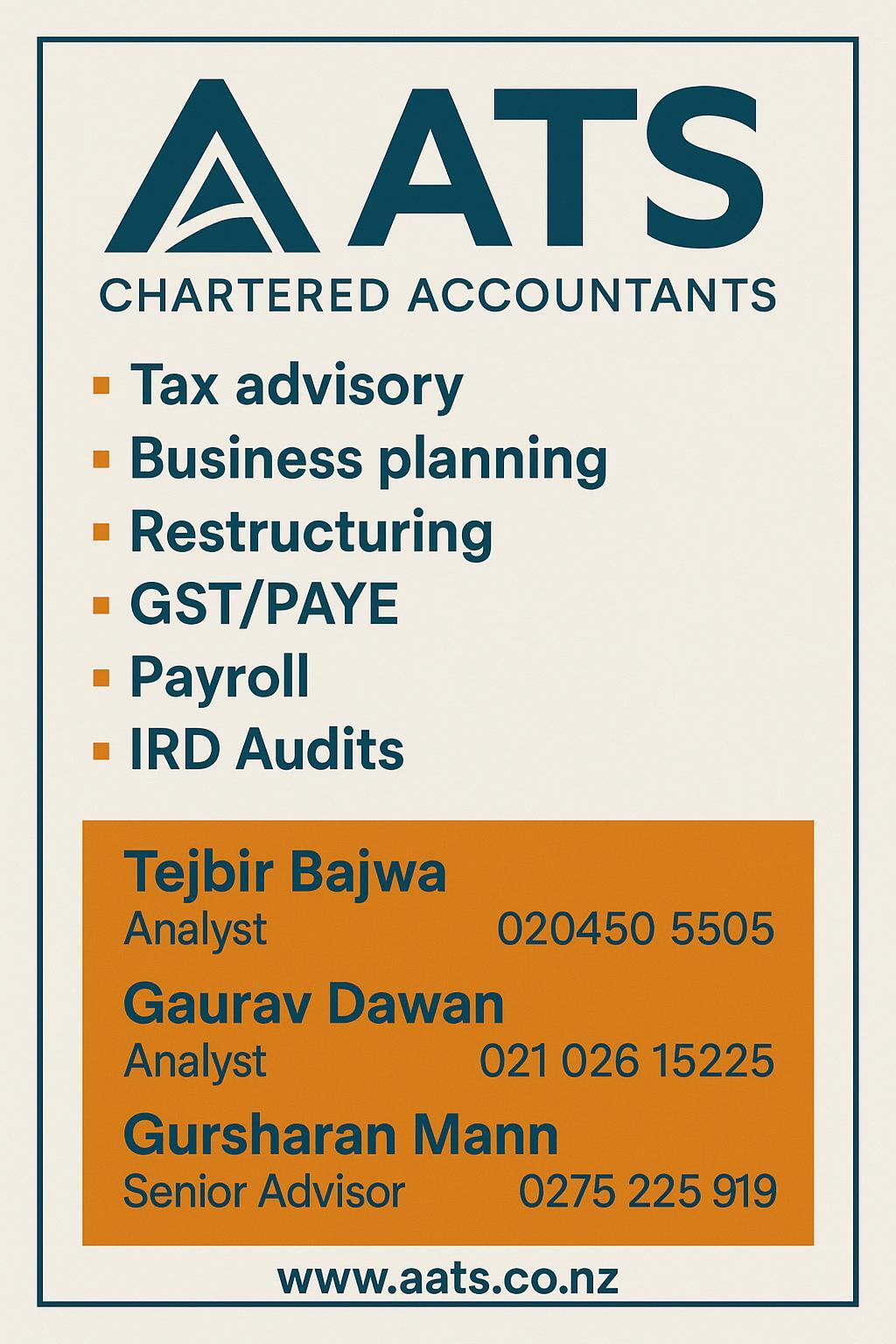NZ midwifery sector is in crisis

There is little doubt that New Zealand’s health system is under stress. The shortage of health professionals this country faces is getting more acute by the day.
And according to the latest data, NZ is facing a chronic shortage of midwives, and there is almost a 25 per cent vacancy rate among midwives in the Health NZ workforce.
These figures from Te Whatu Ora Health NZ, released through a written Parliamentary question from ACT Party, showed that NZ needs 24.2 per cent more midwives to fill existing vacancies.

ACT’s Deputy Leader and Health spokesperson Brooke van Velden says, “Our midwifery sector is in crisis as more and more choose to head overseas or not renew their certificates. This shortage comes as 421 midwives chose not to renew their practising certificates in NZ in 2022. Almost twice the attrition of 2021, when 224 left the industry in NZ. This is disappointing and dangerous.
“There is a serious question of whether New Zealand is still a first-world country when women cannot safely and comfortably give birth. Sadly, our Government’s approach to attracting midwives is non-existent.”
Indian Weekender spoke to Alison Eddy, the chief executive of NZ College of Midwives, which was established in 1989 and represents over 3000 members and is the voice for midwives and women, to know her take on the same.

Eddy says, "There are many reasons for the shortage of midwives in NZ, including high stress and workload and some opting for earlier retirement because of the working conditions. The high vacancy rate reflects that it is a dire situation and things need to be done on priority before it is too late. Most of the midwives feel overworked, overstressed and underpaid."
Eddy also believes there is a dire need to retain midwives by providing them with the right working environment and better wages. "There are a lot of talks that are happening but now is the time to act, else it will be too late. We must also promote midwifery as a viable career option to attract more youngsters in this profession."
Comparing NZ to Australia, Eddy, says the Government needs to have a strong commitment to building the midwifery workforce in NZ. She also maintains that New Zealand's immigration and education standards make it more challenging to recruit midwives from overseas, and things need to work in that direction.
Indian Weekender also got in touch with the Midwifery Employee Representation and Advisory Service (MERAS), which provides services to employed midwives who predominately provide core midwifery services. It represents members in their employment issues, negotiates Collective Agreements, and supports the professional needs of employed midwives.

Sharing her views on the issue of midwives shortage in NZ, Caroline Conroy, MERAS Co-Leader (Midwifery), says, "In the inpatient maternity services of Te Whatu Ora, the midwifery vacancy is between 30- 50%. Most midwives are working extra or longer shifts, and many senior midwives are also doing clinical shifts instead of the role they are employed to do (such as midwife educators, midwife managers).”
Conroy points out that there will be very little annual leave available for hospital midwives over the December and January period. But since some new graduates midwives will be coming into the workplace after Christmas, it will make a difference for some maternity units.
Conroy reveals that several initiatives from the Midwifery Accord, which was established in 2019, have established strong foundations to support the growing number of new midwifery graduates that will start emerging from the Schools of Midwifery next year. According to Conroy, the Schools of Midwifery are seeing an increase in applications from people to do midwifery training.
“The focus for Te Whatu Ora ( Health New Zealand) at the moment needs to be retaining and valuing the current midwives they have at a time when Australia is also doing a very aggressive recruitment campaign,” says Conroy.
The Government's response
When Indian weekender got in touch with Heath New Zealand for their response on the issue, a spokesperson said, “Te Whatu Ora – Health New Zealand values the significant role that midwives play in our health system – and recognises there are challenges with midwifery recruitment and retention, including the remuneration and working conditions for midwives. Improving Aotearoa’s midwifery workforce capacity is an important focus for us.”
The spokesperson confirmed that a workforce task force was stood up to work with employee organisations, relevant union partners, tertiary training institutions and professional regulators to accelerate the need for a trained workforce in priority service areas while national strategic workforce initiatives are being implemented.
According to the spokesperson, the government has taken a few actions in this direction, including providing for the costs of reregistration for NZ midwives who want to return to work and co-ordinating and enhancing national and international healthcare recruitment campaign. The spokesperson also mentioned about the dedicated immigration support services to make it easier for health workers to move to NZ.
On a parting note, the spokesperson said, “We are currently considering how we may be able to support Internationally qualified midwives.”

There is little doubt that New Zealand’s health system is under stress. The shortage of health professionals this country faces is getting more acute by the day.
And according to the latest data, NZ is facing a chronic shortage of midwives, and there is almost a 25 per cent vacancy rate among...
There is little doubt that New Zealand’s health system is under stress. The shortage of health professionals this country faces is getting more acute by the day.
And according to the latest data, NZ is facing a chronic shortage of midwives, and there is almost a 25 per cent vacancy rate among midwives in the Health NZ workforce.
These figures from Te Whatu Ora Health NZ, released through a written Parliamentary question from ACT Party, showed that NZ needs 24.2 per cent more midwives to fill existing vacancies.

ACT’s Deputy Leader and Health spokesperson Brooke van Velden says, “Our midwifery sector is in crisis as more and more choose to head overseas or not renew their certificates. This shortage comes as 421 midwives chose not to renew their practising certificates in NZ in 2022. Almost twice the attrition of 2021, when 224 left the industry in NZ. This is disappointing and dangerous.
“There is a serious question of whether New Zealand is still a first-world country when women cannot safely and comfortably give birth. Sadly, our Government’s approach to attracting midwives is non-existent.”
Indian Weekender spoke to Alison Eddy, the chief executive of NZ College of Midwives, which was established in 1989 and represents over 3000 members and is the voice for midwives and women, to know her take on the same.

Eddy says, "There are many reasons for the shortage of midwives in NZ, including high stress and workload and some opting for earlier retirement because of the working conditions. The high vacancy rate reflects that it is a dire situation and things need to be done on priority before it is too late. Most of the midwives feel overworked, overstressed and underpaid."
Eddy also believes there is a dire need to retain midwives by providing them with the right working environment and better wages. "There are a lot of talks that are happening but now is the time to act, else it will be too late. We must also promote midwifery as a viable career option to attract more youngsters in this profession."
Comparing NZ to Australia, Eddy, says the Government needs to have a strong commitment to building the midwifery workforce in NZ. She also maintains that New Zealand's immigration and education standards make it more challenging to recruit midwives from overseas, and things need to work in that direction.
Indian Weekender also got in touch with the Midwifery Employee Representation and Advisory Service (MERAS), which provides services to employed midwives who predominately provide core midwifery services. It represents members in their employment issues, negotiates Collective Agreements, and supports the professional needs of employed midwives.

Sharing her views on the issue of midwives shortage in NZ, Caroline Conroy, MERAS Co-Leader (Midwifery), says, "In the inpatient maternity services of Te Whatu Ora, the midwifery vacancy is between 30- 50%. Most midwives are working extra or longer shifts, and many senior midwives are also doing clinical shifts instead of the role they are employed to do (such as midwife educators, midwife managers).”
Conroy points out that there will be very little annual leave available for hospital midwives over the December and January period. But since some new graduates midwives will be coming into the workplace after Christmas, it will make a difference for some maternity units.
Conroy reveals that several initiatives from the Midwifery Accord, which was established in 2019, have established strong foundations to support the growing number of new midwifery graduates that will start emerging from the Schools of Midwifery next year. According to Conroy, the Schools of Midwifery are seeing an increase in applications from people to do midwifery training.
“The focus for Te Whatu Ora ( Health New Zealand) at the moment needs to be retaining and valuing the current midwives they have at a time when Australia is also doing a very aggressive recruitment campaign,” says Conroy.
The Government's response
When Indian weekender got in touch with Heath New Zealand for their response on the issue, a spokesperson said, “Te Whatu Ora – Health New Zealand values the significant role that midwives play in our health system – and recognises there are challenges with midwifery recruitment and retention, including the remuneration and working conditions for midwives. Improving Aotearoa’s midwifery workforce capacity is an important focus for us.”
The spokesperson confirmed that a workforce task force was stood up to work with employee organisations, relevant union partners, tertiary training institutions and professional regulators to accelerate the need for a trained workforce in priority service areas while national strategic workforce initiatives are being implemented.
According to the spokesperson, the government has taken a few actions in this direction, including providing for the costs of reregistration for NZ midwives who want to return to work and co-ordinating and enhancing national and international healthcare recruitment campaign. The spokesperson also mentioned about the dedicated immigration support services to make it easier for health workers to move to NZ.
On a parting note, the spokesperson said, “We are currently considering how we may be able to support Internationally qualified midwives.”










Leave a Comment